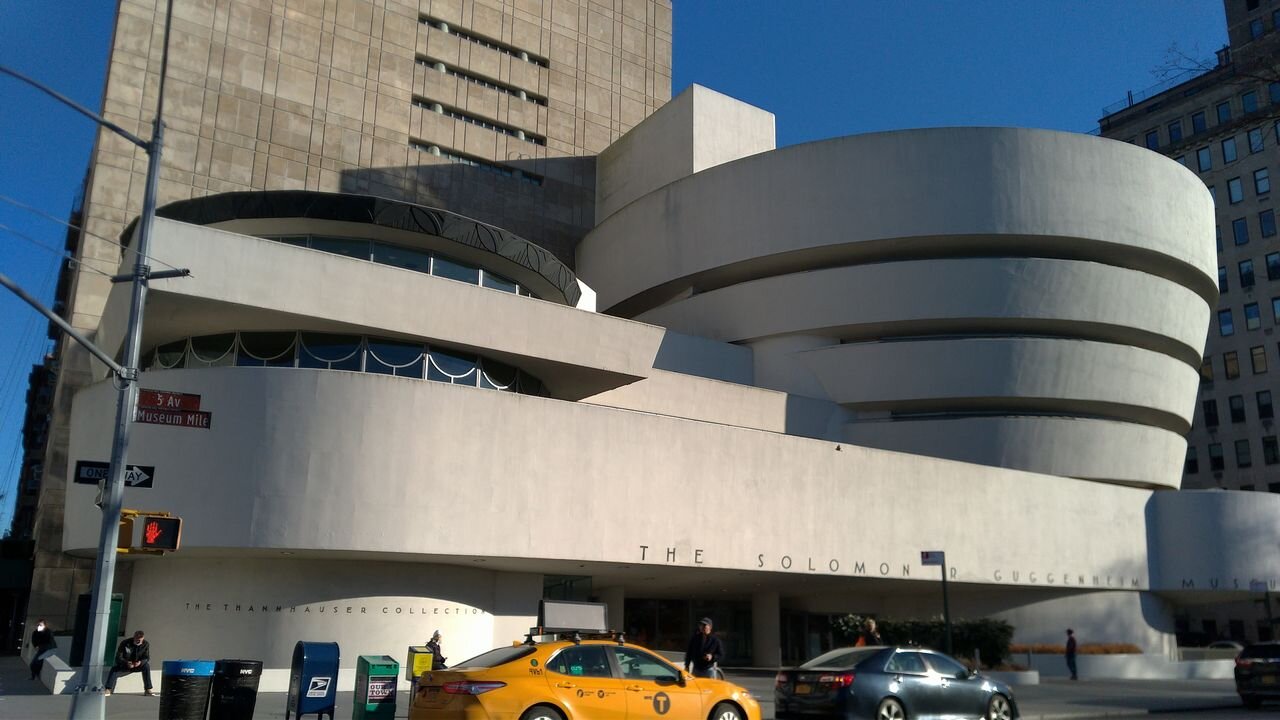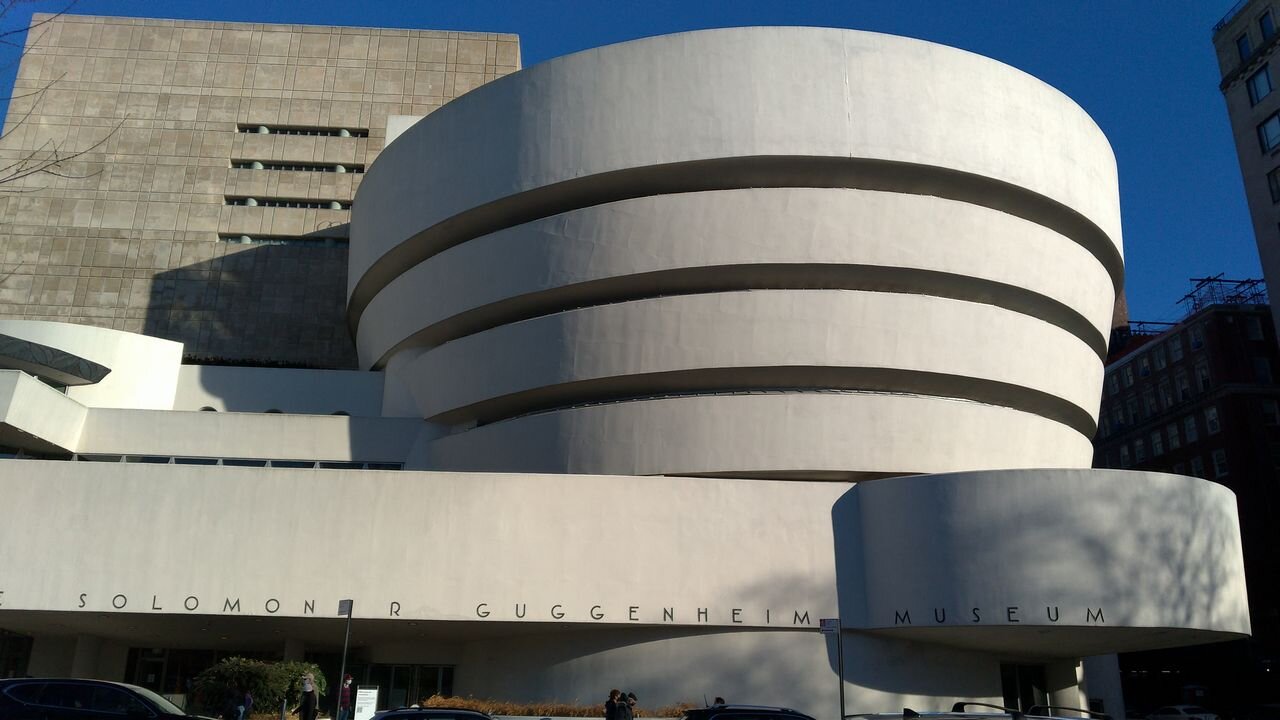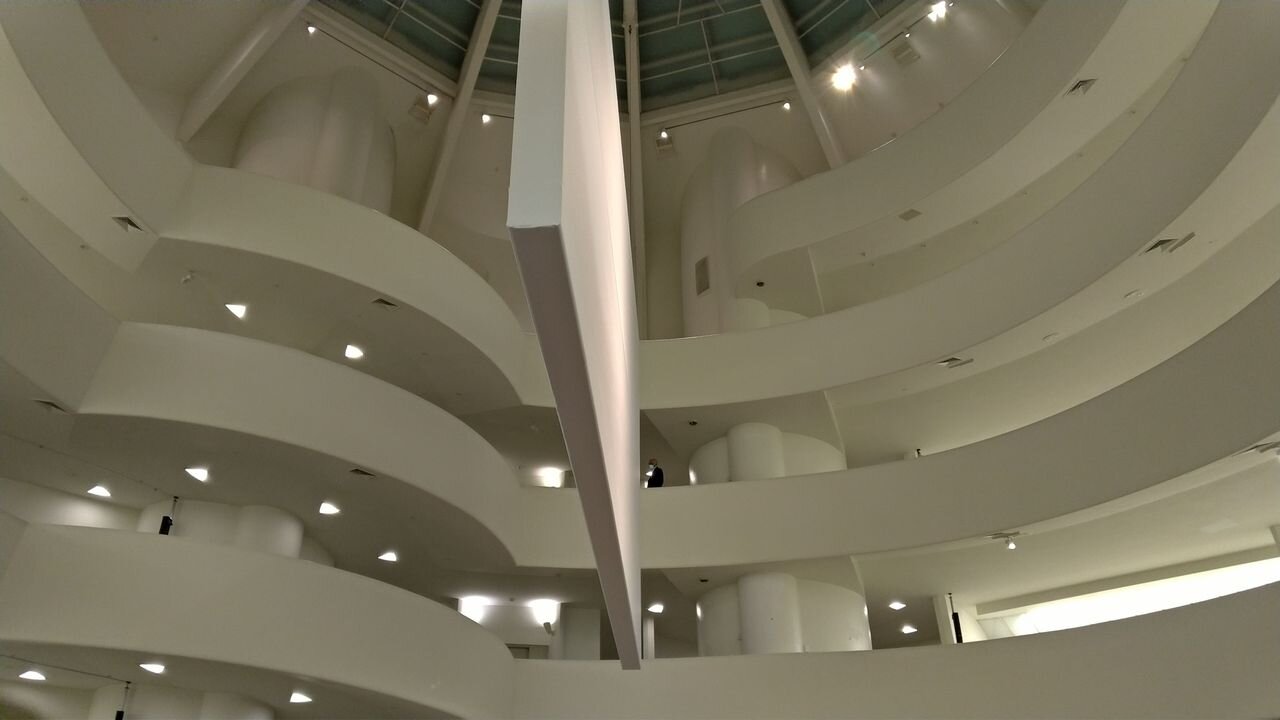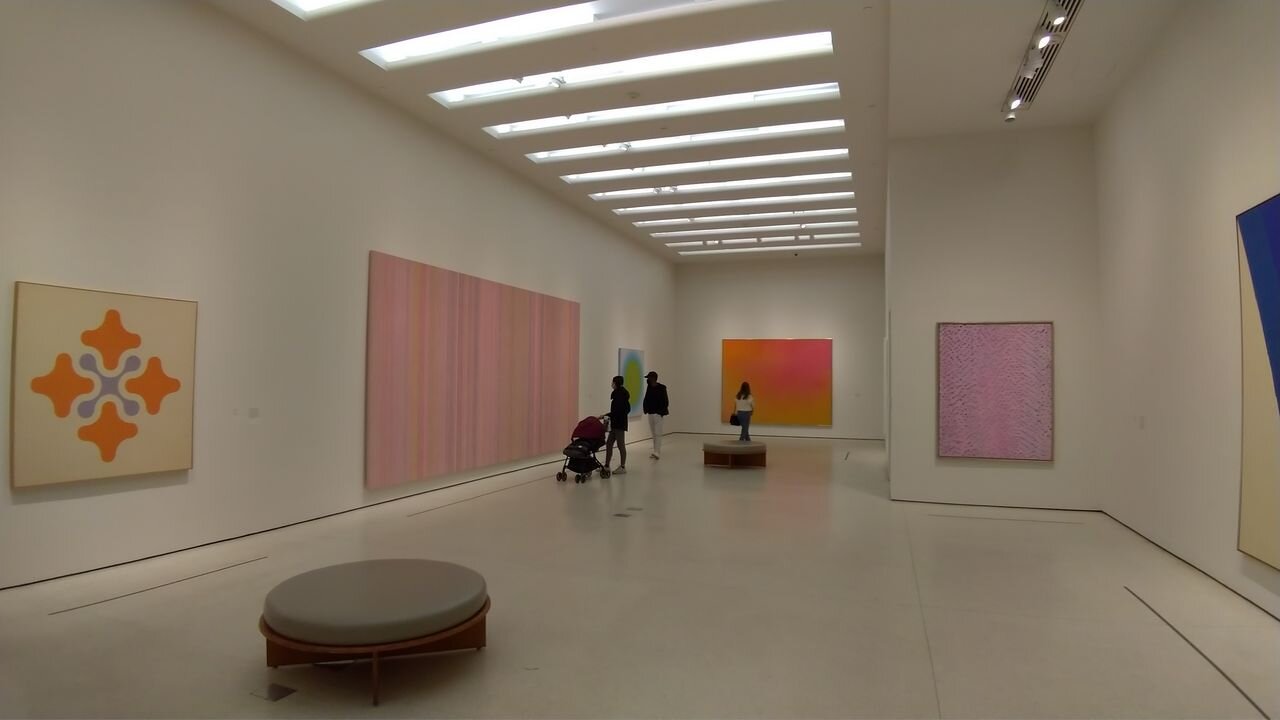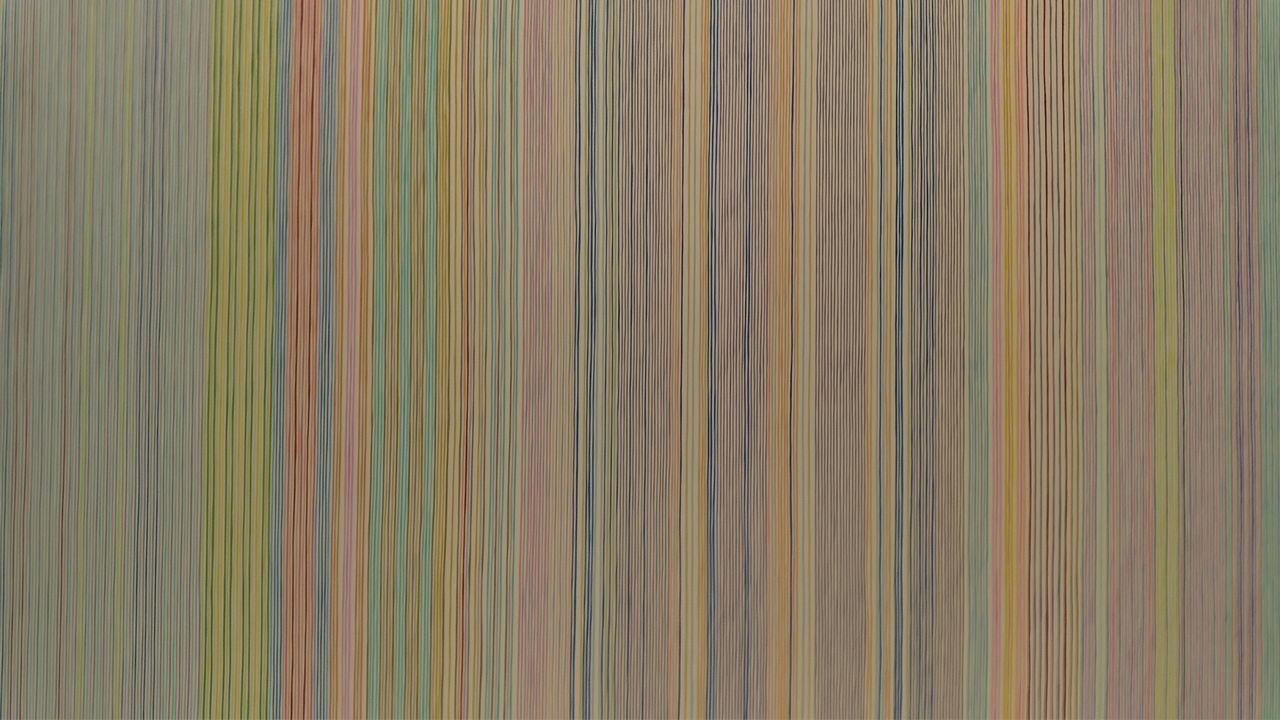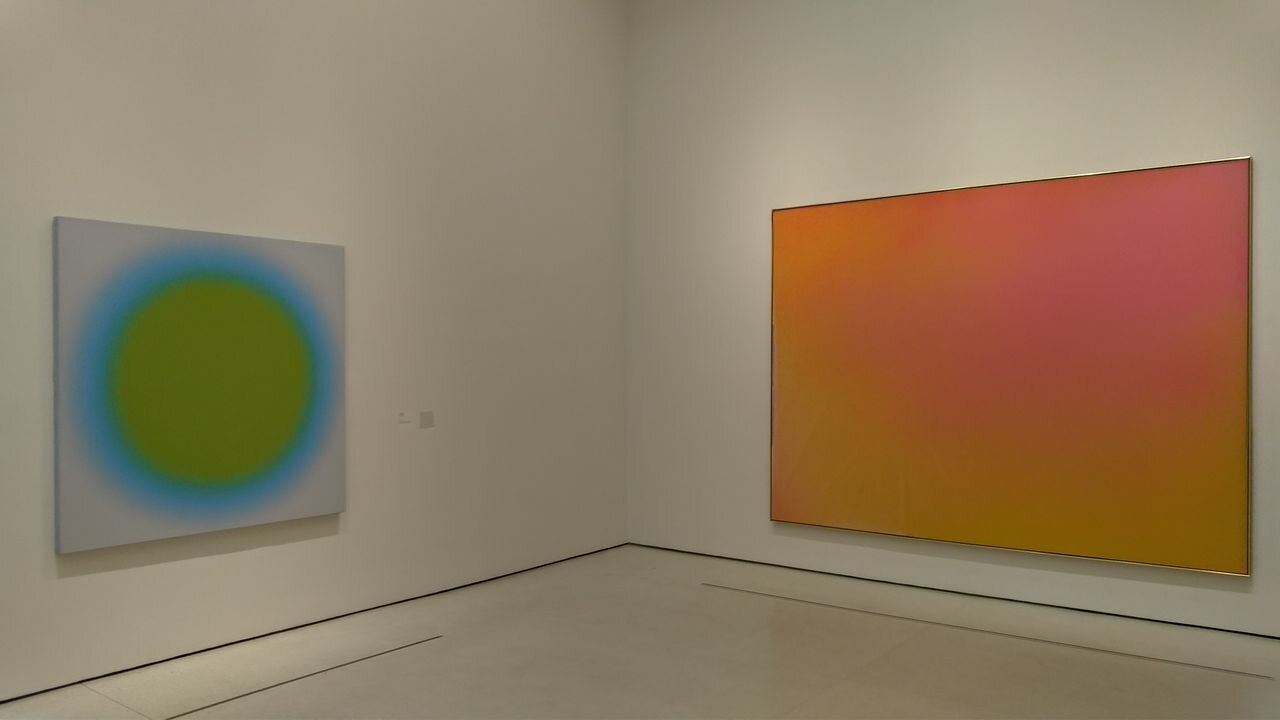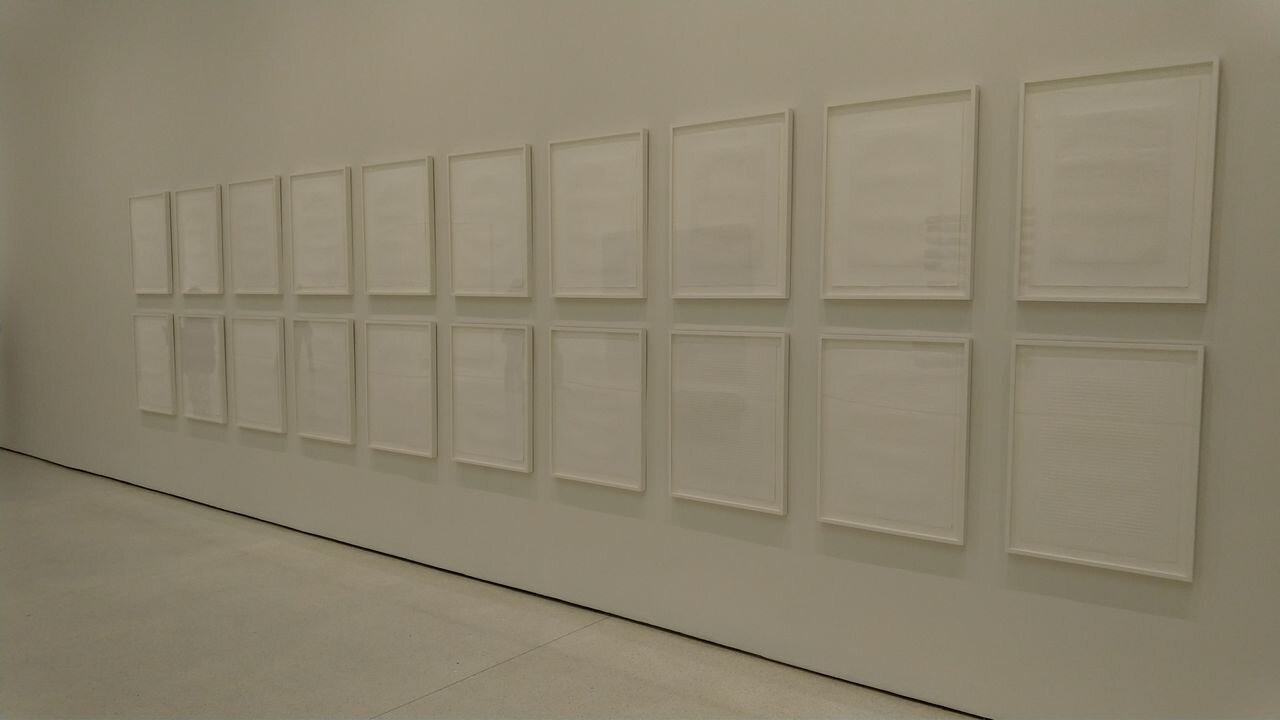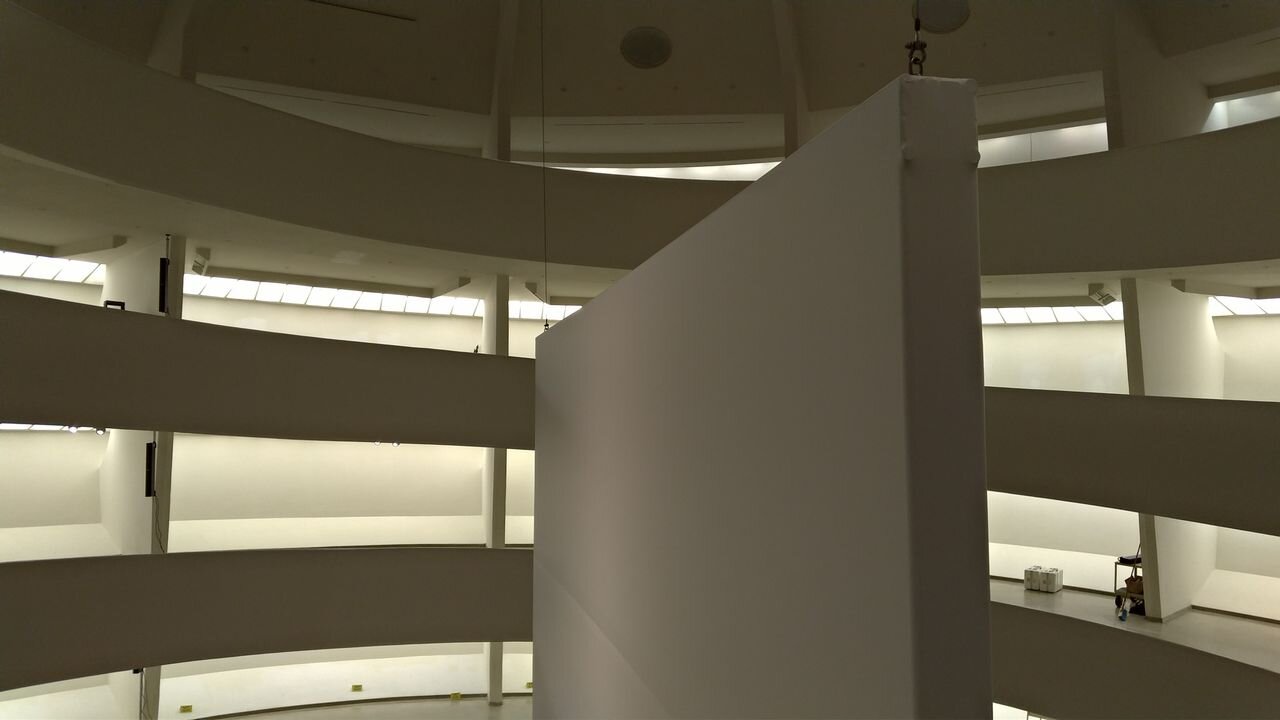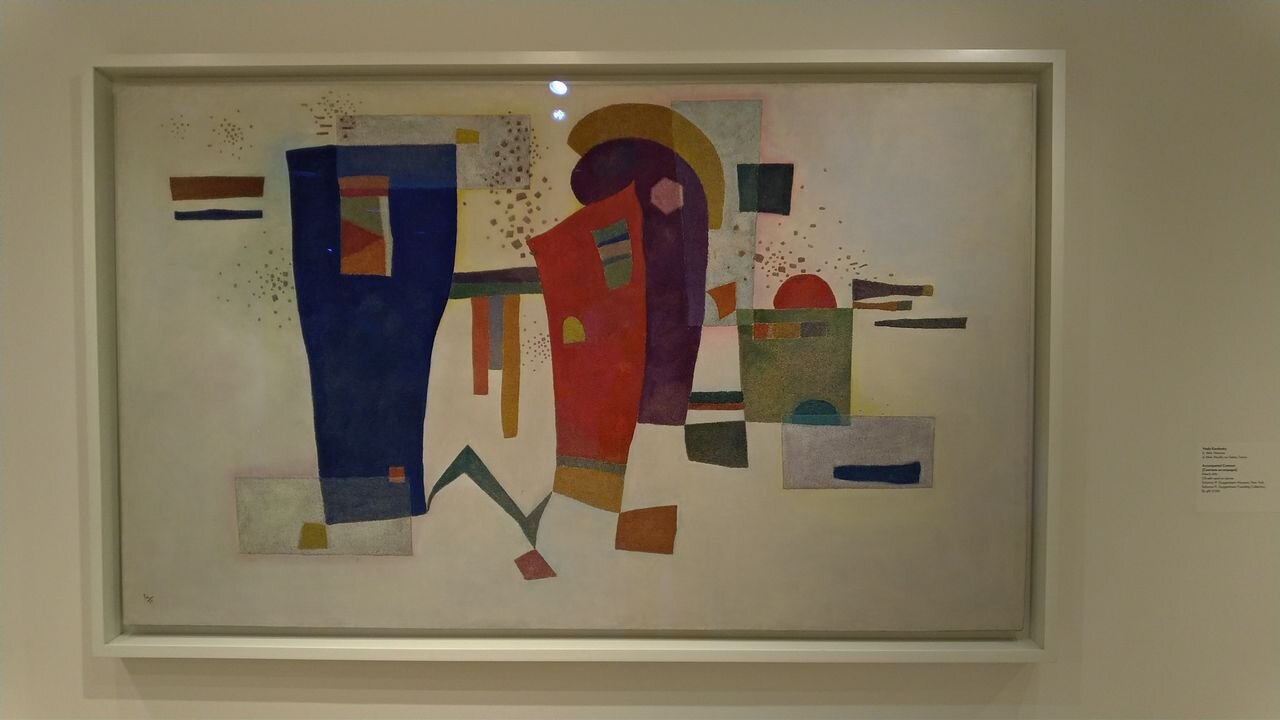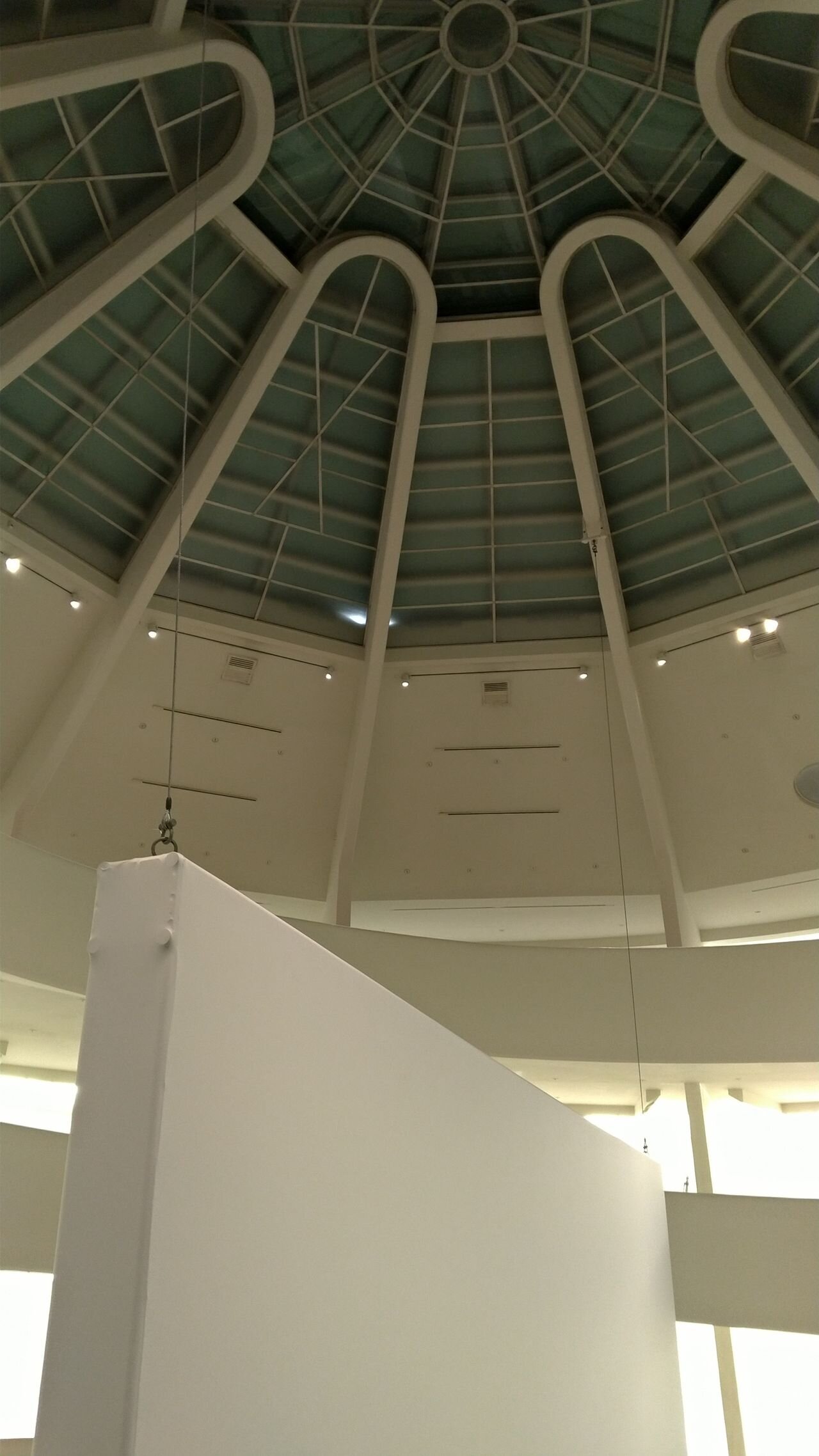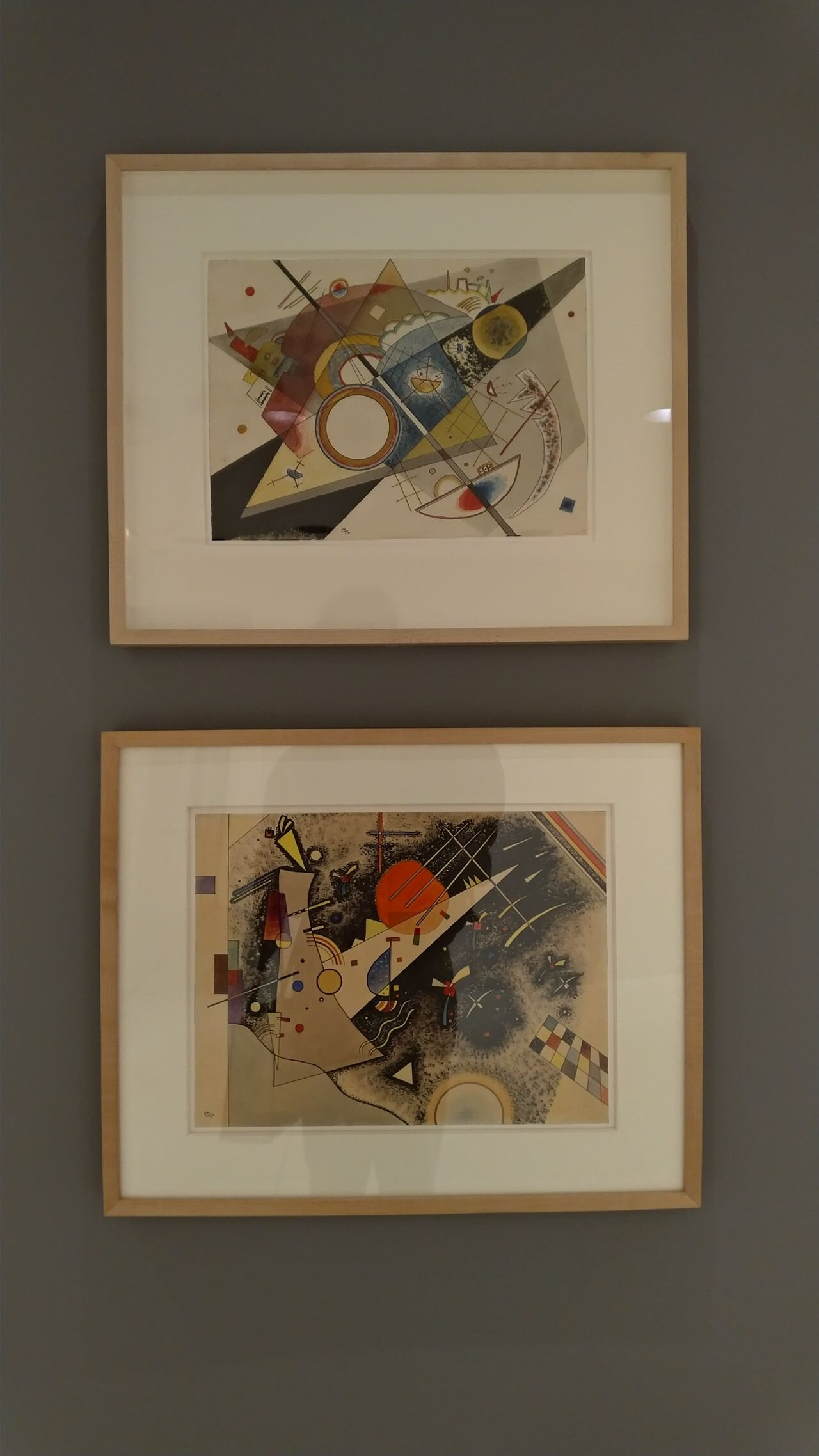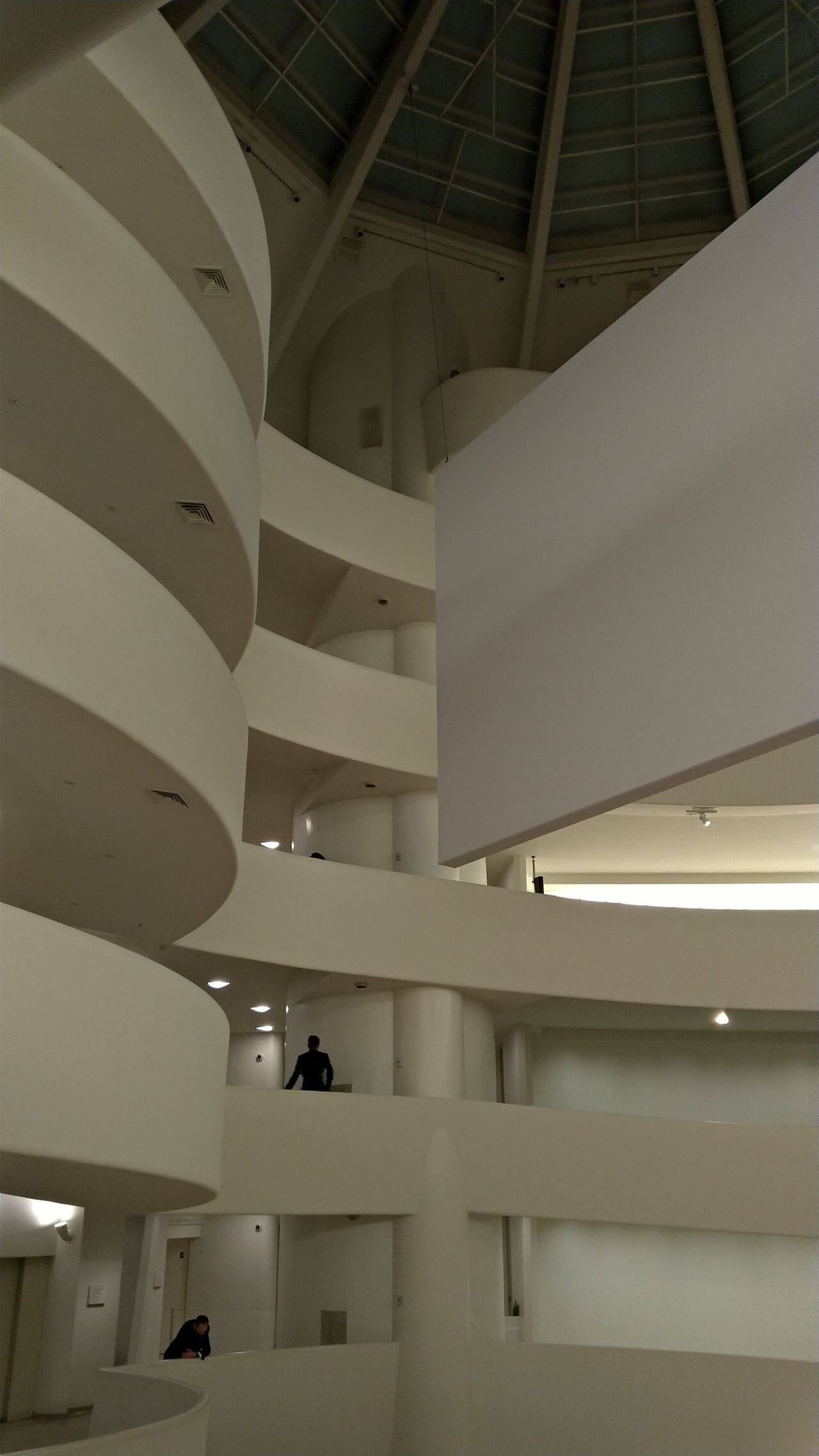Like snails after the rain, on what felt like you could safely call ‘first spring day’, New Yorkers stormed the ‘great outdoors’: on foot, by bike, by scooter, the human crowd swarmed parks and sidewalks with such a determined air that you wondered whether there was some sort of competition going on, and you had been left out! Pushed by my fellow citizens’ drive, I did not even realize how I walked the fifty blocks between Harlem and 89th Street. I bid farewell to the brightest blue sky that has ever existed and, as the Guggenheim Museum door shuts behind me, I let myself get swallowed by the ‘great white’.
The quiet of the six-story spiral is riveting. I start my climb up the helical ramps and it feels as if I’m sucked in by a living organism or some magnetic phenomenon. Suspended from the arched skylight, a gigantic white screen is hanging in the middle of the cone. Though unfinished (since it’s part of an in-progress upcoming exhibition), this rectangular ‘slice’ seems perfectly organic -I accept it as part of the belly of the beast in which I’m floating.
Due to an imposed trajectory in order to regulate visitors’ circulation, I, unfortunately, have to break my pilgrimage and not walk continuously all the way to the top: the meditative spiral ascent -which reminds me of the visit to the Buddhist Borobudur temple of Indonesia- has to be interrupted by taking stairs and even elevators. (And yet, I subsequently read that legendary Frank Lloyd Wright, Guggenheim’s architect, wanted visitors to take the elevator to the top, and then walk down the interior of the truncated cone.)
The first gallery I miraculously land in heightens the uplifting sensation generated by the coiling building. It’s unbelievable how psychotropic getting lost in a work composed solely of painted thin pinstripes can be. Gene Davis’s monumental canvas, with its pink, mauve, yellow and green vertical lines, has this ability. Next to it, Wojciech Fangor’s green circle with the light-blue halo looks like a color-radiating planet, while across, the yellow, orange and pink of Jules Olitski’s ‘field’ invite you to dive in it. Combined with the relatively small size of the white room, the pastel glow of the works makes you feel as if you’re inside a magical bright cocoon. Seeking an explanation why color and geometry can be so stimulating, we learn that the exhibition is titled The Fullness of Color: 1960s Painting, highlighting ’60s and ’70s artists who moved past the Abstract Expressionism of the previous decades and experimented extensively with acrylic color and its ability to create space and motion on the canvas.
Taking again stairs and elevators (and feeling as if I’m hiding from the spiral!), I reach another small gallery. At first glance, the twenty off-white sheets of paper hung in two rows on the wall look like a simple composition of pages. But upon approaching and taking a better look, you discover that each sheet is different and that it comprises numerous tiny holes that Zarina has painstakingly opened (in 1977) on the paper in multiple combinations with variously sized needles. Detail reveals the handmade aspect of the work and automatically brings you closer to the artist’s position -which is part of what the exhibition Marking Time: Process in Minimal Abstraction aims at.
Abstraction has elevated me, for sure, but as I begin my descent, I still have the feeling I’m craving something. Hermitage at Pontoise appears in front of my eyes to fill that gap. The 1867 Pissarro painting has remained almost as vivid in my memory as the last time I saw it a few years ago. I reunite with a piece of myself, gazing at those same ‘mundane’ details –the curtains of the village houses, the two women with the little girl taking a pause from their walk to chat, the winding path, the glorious grass. The work preserves the inexplicable power to transport the viewer –I think I hear the sounds of a summer afternoon.
I may have found it hard to part with the parks a few hours ago, but now I find myself in the most delightful ‘playground’: across from the French countryside, there’s a wall with all the Kandinsky you can ever desire! These 1920s works, with their whimsical, ‘childlike’, fantastical, at times space-like combinations of color and geometrical shape, are pure generators of joy. The later Accompanied Contrast (1935) makes you approach and wonder how planes and ‘figures’ appear to somehow project from the canvas. We learn that the slightly three-dimensional sensation is accomplished through the mixing of pigments with sand, which results in rich, textured surfaces. (God is in the details, and obviously the Russian who knew how to transition from Bauhaus to French surrealism was aware of that.) The label sheds light on the historical dimension: “Kandinsky did not allow the mood of desolation pervading war-torn Europe to enter the paintings and watercolors that he produced in France, where he lived from early 1934 until his death in 1944.”
‘The bell rings’ and time’s up. In a typical NYC weather reversal, the city I exit onto is in a different season than it was when I entered the Guggenheim: as the sun sets across Central Park, the wind is so chilly that it feels as if we’re back to winter. Oh, well: I have the memory of Pissarro’s summer day to keep me warm; and Kandinsky’s playground to keep me uplifted.
This essay first appeared in Greek in the TA NEA newspaper (in print and online) on May 20, 2021.
Το κείμενο αυτό πρωτοδημοσιεύτηκε στην εφημερίδα ΤΑ ΝΕΑ (έντυπη και ηλεκτρονική έκδοση) στις 20 Μαΐου 2021.
